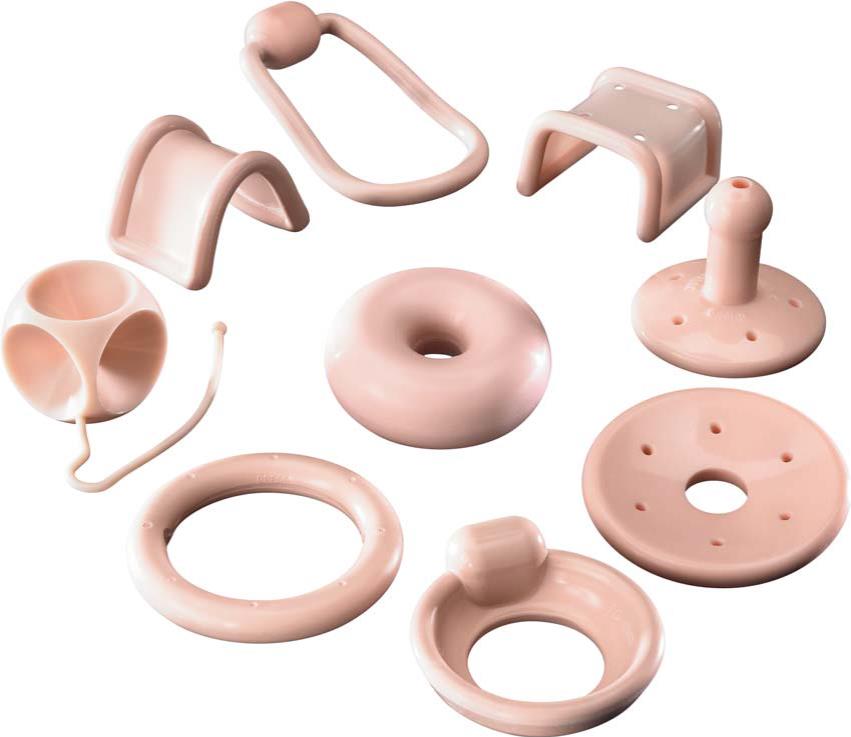If you’ve been told you have a pelvic organ prolapse, you’re not alone. Prolapse is a common condition affecting people of all ages—often linked to childbirth, aging, or changes in tissue health. While a diagnosis can feel daunting, the good news is there are effective ways to manage prolapse symptoms, including the use of a pessary.
What is a pessary:
Pessaries are space-occupying devices that are inserted and left in the vaginal canal to support the vaginal walls when they begin to prolapse (sag or shift downward). Think of it like a soft, internal brace that helps reduce pressure, discomfort, and other symptoms associated with pelvic organ prolapse.

Pessaries are typically fitted by a certified practitioner, such as a pelvic floor physiotherapist, naturopathic physicians with special training in pelvic floor, or gynecologist, once a prolapse has been confirmed. The fitting process is important—pessaries come in a wide range of shapes and sizes and need to match both the internal measurements of the vaginal canal and the specific type and severity of the prolapse. A well-fitted pessary should feel comfortable and would remain in place during daily activities, including movement and physical exertion.
Depending on individual needs, pessaries can be used short-term—for example, during certain activities like exercise or throughout pregnancy—or they may offer long-term symptom relief with regular daily use.
What is a prolapse:
Pelvic organ prolapse happens when the muscles and ligaments that normally support the pelvic organs become weakened or stretched. This can occur for many reasons, including pregnancy, childbirth, menopause, or simply as we age. As these support structures change, organs like the bladder, uterus, or rectum can shift down into the vaginal space.
People with prolapse often describe a feeling of heaviness, pressure, or bulging in the vaginal area. Others may notice changes with bladder control, bowel function, sexual activity, or even experience lower back or pelvic discomfort. Prolapse is classified in stages, from mild (stage one) to more advanced (stage three or four, depending on the organ involved). Your healthcare provider can help assess the severity and recommend the right course of action.
What alternative treatments exist for prolapse:
The first line of care for prolapse typically involves pelvic floor rehabilitation. Working with a qualified pelvic health physiotherapist can help you strengthen the muscles that support your pelvic organs, often reducing symptoms and preventing progression. In some cases, vaginal estrogen therapy may also be recommended to improve tissue health, especially after menopause.
For those with moderate to severe prolapse, or when symptoms persist despite rehab, a pessary offers a non-surgical way to relieve pressure and support pelvic organs. Some people choose a pessary as a temporary solution while awaiting surgery, while others use it long-term as an alternative to surgery.
Surgical repair remains an option for certain cases, especially when prolapse significantly affects quality of life. Your healthcare team can help you decide which approach fits best with your goals and lifestyle.

Why Consider a Pessary?
Pessaries are a low-risk, non-invasive option that empowers people to take control of their pelvic health. With proper fitting and care, they can be a game-changer—providing symptom relief, supporting physical activity, and improving confidence in daily life.
In addition, pessaries have been shown to be a very effective and a conservative treatment option. Pessaries can be used to manage prolapse symptoms while patients wait for surgery, as an alternative to surgery, or for prolapses that do not qualify for surgery.
If you have more questions about your pelvic health, pelvic organ prolapse, or pessaries, I’m happy to discuss what options are available for your and help you understand the choices clearly.




